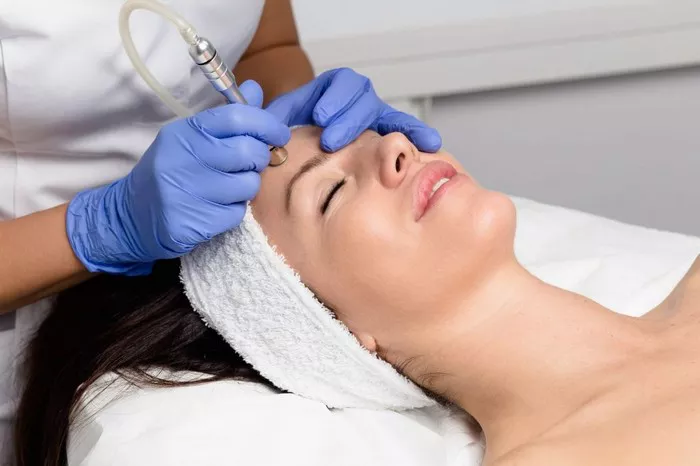HydraFacial is a popular cosmetic procedure that uses a patented device to cleanse, exfoliate, and hydrate the skin. This procedure has become increasingly popular in recent years due to its ability to improve the appearance of the skin without causing discomfort or downtime. While HydraFacial is generally considered safe and effective, it is important to consider the potential disadvantages of this procedure before deciding to undergo it. In this article, we will discuss the disadvantages of HydraFacial.
Cost
One of the most common disadvantages of HydraFacial is the cost. This procedure can be expensive, especially if multiple treatments are needed to achieve the desired results. In addition to the cost of the procedure itself, there may be additional costs associated with post-treatment care, such as prescription medications and skincare products.
The cost of HydraFacial varies depending on a variety of factors, including the location of the provider, the experience of the provider, and the specific treatment being performed. In general, the cost of HydraFacial ranges from $150 to $300 per treatment.
To reduce the cost of HydraFacial, it is important to shop around and compare prices from different providers. It is also important to consider the long-term cost of the procedure, as some treatments may require ongoing maintenance to maintain the results.
Limited Effectiveness
While HydraFacial can be effective in improving the appearance of the skin, it is not a miracle cure. The effectiveness of the treatment depends on a variety of factors, including the individual’s skin type and tone, and the severity of the skin condition being treated.
In some cases, HydraFacial may not be effective at all, or may only provide limited improvement. For example, individuals with deep wrinkles or severe acne scarring may not see significant improvement with HydraFacial alone.
It is important to have realistic expectations about the results of the treatment, and to discuss these expectations with your provider before undergoing the procedure. Your provider can help you determine if HydraFacial is the best treatment option for your individual needs.
Risk of Infection
Another potential disadvantage of HydraFacial is the risk of infection. While this procedure is generally considered safe, there is always a risk of infection anytime the skin is broken. This risk is increased if the individual has a weakened immune system or if the treatment is not performed in a sterile environment.
To reduce the risk of infection, it is important to choose a reputable provider who follows strict hygiene protocols. This includes using sterile equipment and properly disinfecting the treatment area before and after the procedure.
It is also important to follow all post-treatment care instructions, including keeping the treated area clean and avoiding touching it with dirty hands. If you experience any signs of infection, such as redness, swelling, or pus, it is important to contact your provider immediately.
Risk of Skin Irritation
While HydraFacial is generally considered safe and gentle, there is a risk of skin irritation associated with the procedure. This can manifest as redness, swelling, or itching in the treated area.
The risk of skin irritation is increased in individuals with sensitive skin or a history of allergic reactions. It is important to inform your provider of any skin conditions or allergies you may have before undergoing the procedure.
To reduce the risk of skin irritation, it is important to choose a provider who has experience performing HydraFacial treatments. Your provider can help you determine if HydraFacial is appropriate for your skin type and tone.
It is also important to follow all post-treatment care instructions, including avoiding sun exposure and applying moisturizer to the treated area. If you experience any signs of skin irritation, such as itching or redness, it is important to contact your provider immediately.
Not Suitable for All Skin Types
While HydraFacial is generally considered safe for most skin types, it may not be suitable for everyone. Individuals with certain skin conditions, such as rosacea or eczema, may be at increased risk of complications from this procedure.
It is important to inform your provider of any skin conditions or allergies you may have before undergoing the procedure. Your provider can help you determine if HydraFacial is appropriate for your individual needs.
In some cases, your provider may recommend an alternative treatment option, such as chemical peels or laser therapy. These procedures may be more effective for individuals with certain skin conditions or concerns.
Conclusion
HydraFacial is a popular cosmetic procedure that can improve the appearance of the skin without causing discomfort or downtime. While this procedure is generally considered safe and effective, it is important to consider the potential disadvantages before deciding to undergo it. These disadvantages include cost, limited effectiveness, risk of infection, risk of skin irritation, and suitability for all skin types.
By understanding these risks and taking steps to minimize them, you can make an informed decision about whether HydraFacial is right for you. It is important to choose a reputable provider who has experience performing HydraFacial treatments and to follow all post-treatment care instructions to minimize the risk of complications. With the right treatment, you can achieve a smoother, more radiant complexion and regain your confidence.


